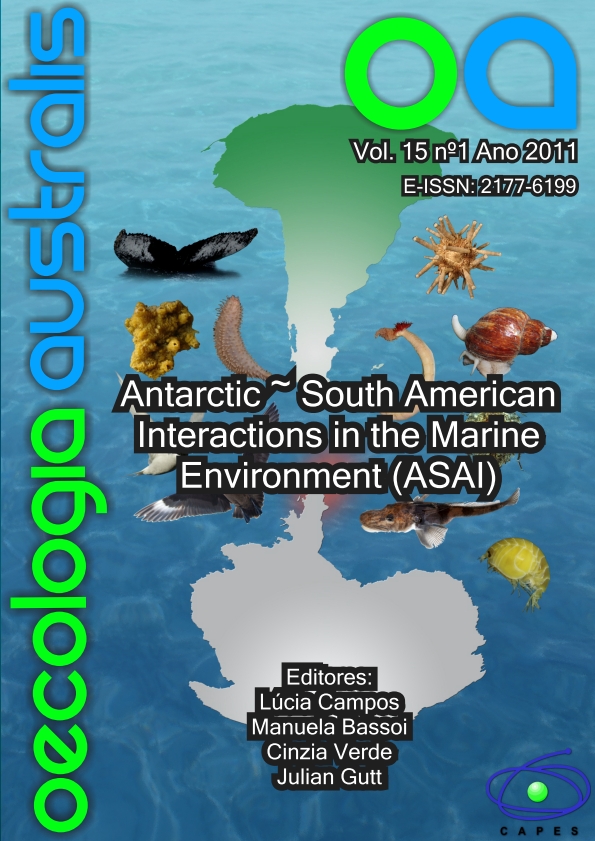ANTARCTIC ~ SOUTH AMERICAN INTERACTIONS IN THE MARINE ENVIRONMENT: A COMARGE AND CAML EFFORT THROUGH THE SOUTH AMERICAN CONSORTIUM ON ANTARCTIC MARINE BIODIVERSITY
Keywords:
Antarctic, South America, continental margin, biodiversity, pelagic, benthos, top predatorsAbstract
The study of the Antarctic isolation from other continents by the Southern Ocean is relevant for understanding circulation patterns in the world oceans and atmosphere, and how biological communities have responded to past and present environmental changes. A detailed knowledge of Antarctica's past and present status is globally significant for predicting how its future may affect the Earth's System. Comparisons between Antarctica and other fragments of Gondwana, the study of climate change, and anthropogenic influences to the Antarctic environment are critical for understanding the evolution and present biological community structures in Antarctica, and their relations with the biota outside the Polar Front. The ultimate separation of Antarctica from South America happened during the Oligocene, and was responsible for the Antarctic isolation. The combination of this isolation and climate change has lead to an Antarctic biota rich in endemic taxa, also in the marine environment. But how isolated is Antarctica? This major question has been raised for many years and within the research SCAR Programmes (EBA, AGCS, ACE). The potential biotic links between Antarctica and the surrounding continents, and whether faunal exchange occurs have been undertaken by more than one Census of Marine Life projects. In this context, the Antarctic-South American biodiversity latitudinal gradient is particularly interesting because of the proximity of the two continents, and the fact that they separated at a relatively short time ago about 35 million years ago. Here, we provide a historical background for the South American Consortium on Antarctic Marine Biodiversity in the scope of the Census of Antarctic Marine Life (LA CAML), its integration with the Continental Margin Ecosystems on a Worldwide Scale (COMARGE), another Census of Marine Life project, also introduce some results from these interactions and manuscripts present in this volume. The “LA CAML/ BioMAntar /COMARGE Integrated Workshop and Symposium”, have allowed gathering available data collected either in Antarctica, South America or both continents, which are relevant to our understanding of their associations. Approximately 10,000 species records were raised from microbes to top predadors during the workshop. Nematodes had the highest number of records followed by crustaceans, annelids, molluscs, echinoderms, and several other groups, and from those about 173 species were found to be shared between Antarctica and South America. These were opportunities for scientists to exchange data, and further discuss the potential Antarctic ~ South American biodiversity connections, taking into account all the marine realms and depth range from coastal to abyssal zones (> 4000 m depth), and also the human component of these connectivities.


